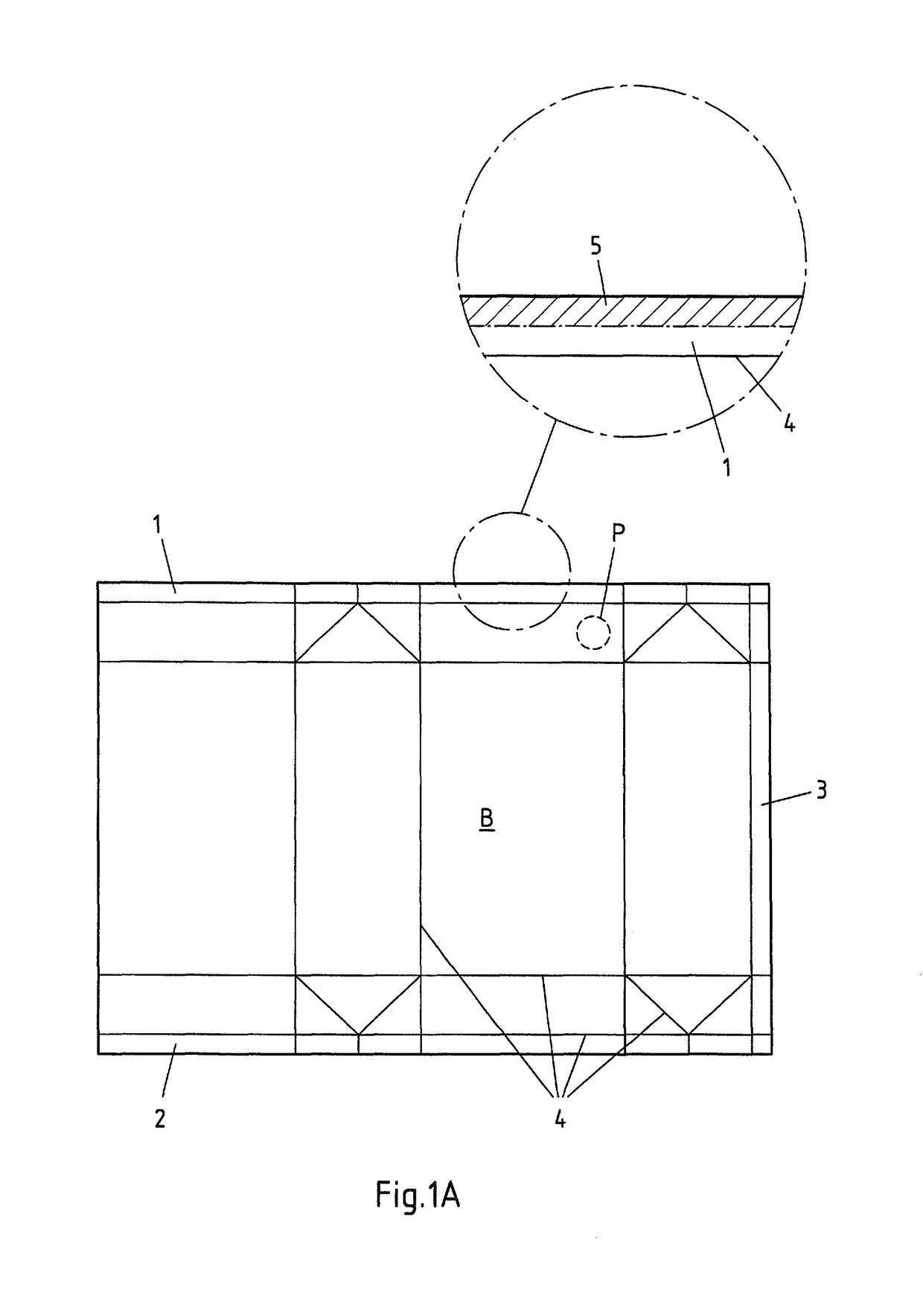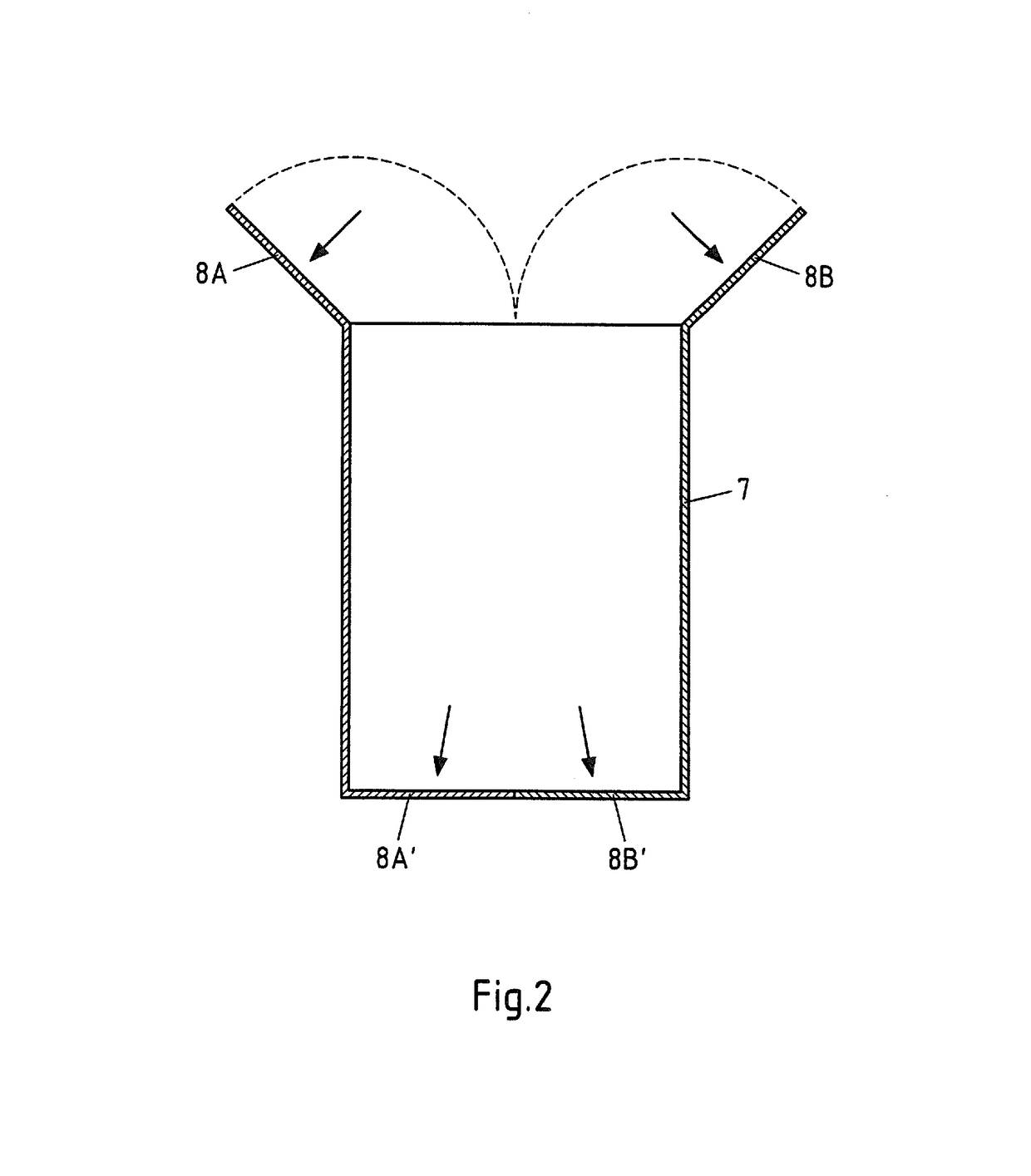Method for treating the open cut edges of packaging material for the production of cardboard/plastics composite packaging and a packaging material, a composite packaging produced therefrom and a container for receiving packaging material
a technology of open cut edges and packaging materials, which is applied in the direction of packaging paper, transportation and packaging, containers preventing decay, etc., can solve the problems of high energy costs and noise emissions of production processes, contamination of products cannot be excluded, and the bacterial load of materials can increase, so as to promote the absorption action of cut edges and reduce the effect of vapour pressur
- Summary
- Abstract
- Description
- Claims
- Application Information
AI Technical Summary
Benefits of technology
Problems solved by technology
Method used
Image
Examples
Embodiment Construction
[0124]FIG. 1A shows a blank B which is produced from a composite laminate and has three zones 1, 2, 3 at the top, bottom and on its right side for the later seam production and is also provided with a plurality of crease and fold lines 4 which facilitate the later folding up of the finished beverage carton and of which only a few have been provided with reference numeral 4 in FIG. 1A. On the top of the blank B, a round perforation P has been provided as a weakened zone for a pouring element (not shown) which is to be applied.
[0125]FIG. 1B shows a packaging sleeve S, produced from a blank B according to FIG. 1A, said blank B having been joined in its seam region 3 to form a sheath by sealing a longitudinal seam 6 and having been folded flat to form a packaging sleeve S. The blank is folded flat simply because the packaging sleeves S are usually produced in another location compared to the subsequent further processing to produce beverage packagings, which processing is carried out in...
PUM
| Property | Measurement | Unit |
|---|---|---|
| thick | aaaaa | aaaaa |
| processing time | aaaaa | aaaaa |
| processing time | aaaaa | aaaaa |
Abstract
Description
Claims
Application Information
 Login to View More
Login to View More - R&D
- Intellectual Property
- Life Sciences
- Materials
- Tech Scout
- Unparalleled Data Quality
- Higher Quality Content
- 60% Fewer Hallucinations
Browse by: Latest US Patents, China's latest patents, Technical Efficacy Thesaurus, Application Domain, Technology Topic, Popular Technical Reports.
© 2025 PatSnap. All rights reserved.Legal|Privacy policy|Modern Slavery Act Transparency Statement|Sitemap|About US| Contact US: help@patsnap.com



